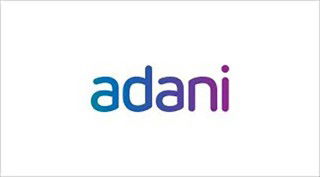Cemex, the biggest cement producer in the U.S., has cut its energy bills by 17% in the past four years. The company is reaping the benefits of an ambitious decadelong effort to refit its cement plants so they can operate on low-cost, little-used fuels such as an oil-industry residue called petroleum coke and industrial waste like oily rags.
Cemex’s success in reducing its energy expense offers an unusual lesson in global business, showing what a developing-world company can do when forced to deal with competition from the developed world. In some cases the difficult operating environments of emerging markets -- economic turbulence, high borrowing costs, creaky infrastructure and corruption -- can act as a rigorous corporate boot camp, breeding the kind of innovation that makes for lean competitors on the world stage.
Cemex’s biggest weapon in its war on energy costs has been petroleum coke. Cemex. Pet coke now accounts for half of Cemex’s fuel needs. That has given Cemex a big competitive advantage, particularly in recent months as the price of coal soared to about twice that of pet coke.
"Cemex was the first cement company to use pet coke as a key strategy for gaining competitive advantage," says Ben Ziesmer, an energy consultant and a contributing editor to the Pace Petroleum Coke Quarterly and other specialized energy publications. "They recognized it early, spread the use of pet coke throughout their organization, and others have started to follow."
To lead a search for lower-price energy, Cemex in 1991 recruited Luis Farias, a technology planner then working at a Mexican steel company. A graduate of the University of London with a doctorate in process metallurgy, Dr. Farias jumped at the challenge. With two of his most trusted engineers in tow, he moved into a new office at Cemex’s Monterrey headquarters and disappeared under piles of price charts, blueprints and fuel studies.
Dr. Farias knew about pet coke from his days in the steel industry, where it is used to help turn iron into steel. Inexpensive, hard and compact, it could be moved easily by rail. Its biggest problem was that it tended to clog kilns when burned. But Dr. Farias knew a Spanish cement maker was running totally on petroleum coke, suggesting it had solved the clogging problem. So after months spent studying different options, he made an audacious proposal to Mr. Zambrano: Convert as many Cemex plants as possible to run mainly on pet coke.
To ensure an adequate supply of pet coke, Dr. Farias set up a subsidiary in Houston to negotiate directly with oil refineries. The Houston subsidiary arranges for the coke to be shipped to Cemex’s plants around the world, an innovation for an industry where individual plants had traditionally ordered their own fuel supplies. The subsidiary has turned into a small money maker for Cemex by selling the pet coke the company doesn’t need.
In 1993, Dr. Farias turned to industrial waste, which Cemex still hoped could be a fuel source. To guarantee enough supply, he started a business that contracted with big manufacturers to collect their waste for burning in Cemex’s cement kilns. In effect, Cemex is being paid to collect some of its energy supply. At the Huichapan plant, in central Mexico, a conveyer system carries bags of oily rags several stories up to an oven tower, where they help feed the kiln’s flames. Nearby, a pile of truck tires waits for loading, while a yellow tank sits ready to spit a blend of paint sludge, industrial lubricants and the remains from hundreds of automobile oil-changes into the flames.
Cemex opened an office in Switzerland staffed with engineers continually searching for new energy sources. To keep in touch with this office and pet-coke traders in Houston, Dr. Farias has a live video hookup running 24 hours a day on a flat computer screen in the hallway outside his office.
Cemex has also designed software to make it easier for company executives and plant managers to keep tabs on power use. At Cemex’s Huichapan plant, manager Mario Tovar uses the software to plan each month’s energy consumption, ensuring that electric grinders, conveyers and other equipment run mainly during off-peak electricity hours. There is trouble if he misses his target by more than 10%, he says.
